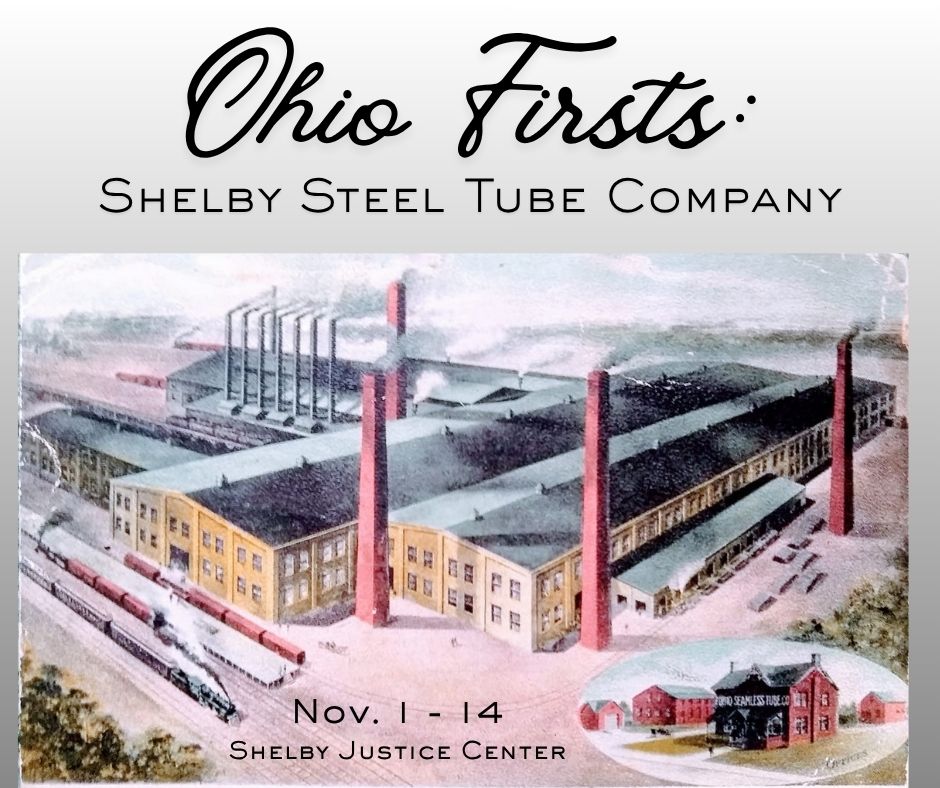
Shelby Kicks Off America 250 Celebration with New Exhibit: Ohio Firsts – Shelby Steel Tube Company
The City of Shelby is proud to launch its America 250 celebration with a brand-new exhibit, Ohio Firsts: Shelby Steel Tube Company, opening November 1 in the Shelby Justice Center.
Created by the Shelby Cycle Historical Society and funded through a Trillium Local Activity Grant from the America 250–Ohio Commission, this 15-foot-wide interpretive panel exhibit is open 24 hours a day through November 14.
Explore Shelby’s Pioneering Role in America’s Industrial Story
Through rare photos, maps, and historic documents, visitors will learn how a small Ohio town became home to America’s first cold-drawn seamless steel tube company—a legacy that continues today as ArcelorMittal Shelby, 135 years later.
In the 1880s, seamless tubing was imported from Europe. By 1890, with help from local businessmen and two key rail lines, the Lozier-Yost Seamless Tube Company—later the Shelby Steel Tube Company—was born, forever changing the course of American manufacturing.
Visit During the Open Houses
📅 Sunday, November 2 and November 9
🕐 1:00 – 4:00 p.m.
📍 Shelby Justice Center
“Tuby” historians will be available both days to answer questions and share stories about the company and its workers.
Visitors can also view the 1908 Inventory Book, which lists supplies used to rebuild the factory after a devastating fire, along with original Sanborn Fire Insurance Maps showing the site’s expansion.
Honoring Civil War Veterans – November 9
A special feature on Sunday, November 9 will recognize Civil War veterans who helped found and lead the Tube Works in its early years. This display is presented in partnership with the McLaughlin Camp 12, Sons of Union Veterans of the Civil War.
Part of a Traveling Exhibit
This exhibit is part of a larger, statewide traveling series that explores the birth of the seamless tube industry from 1890–1909. Each interpretive panel includes QR codes linking to online resources that tell the full story of innovation, resilience, and community pride in Shelby’s industrial past.
